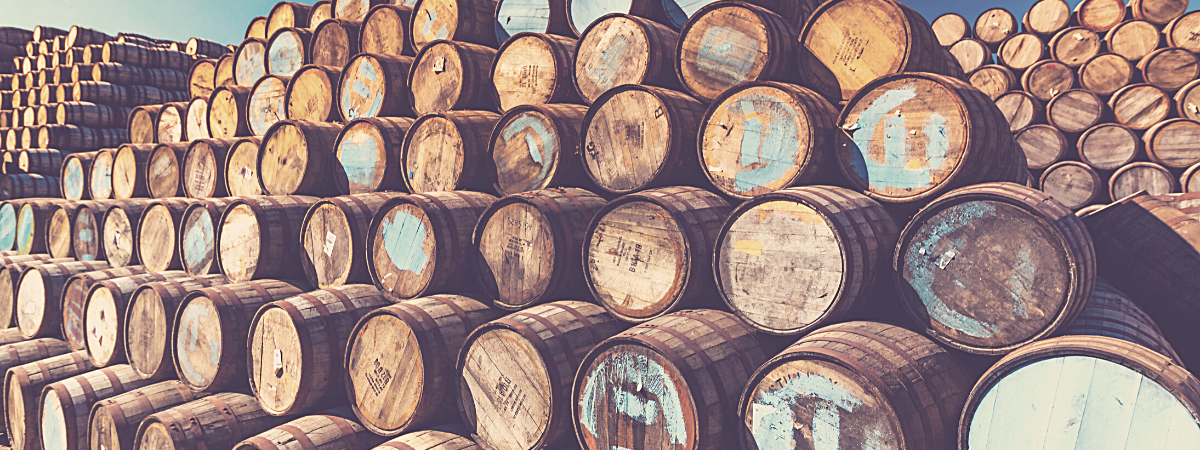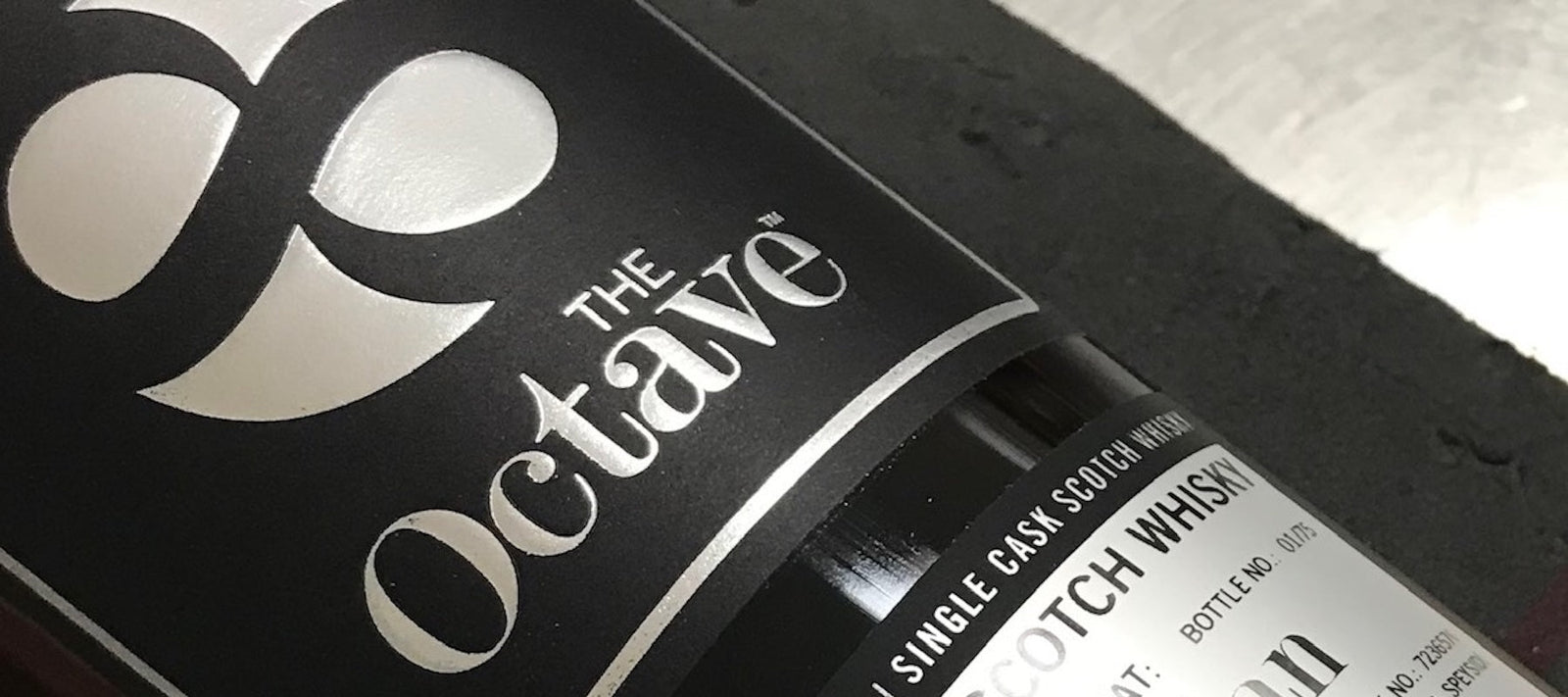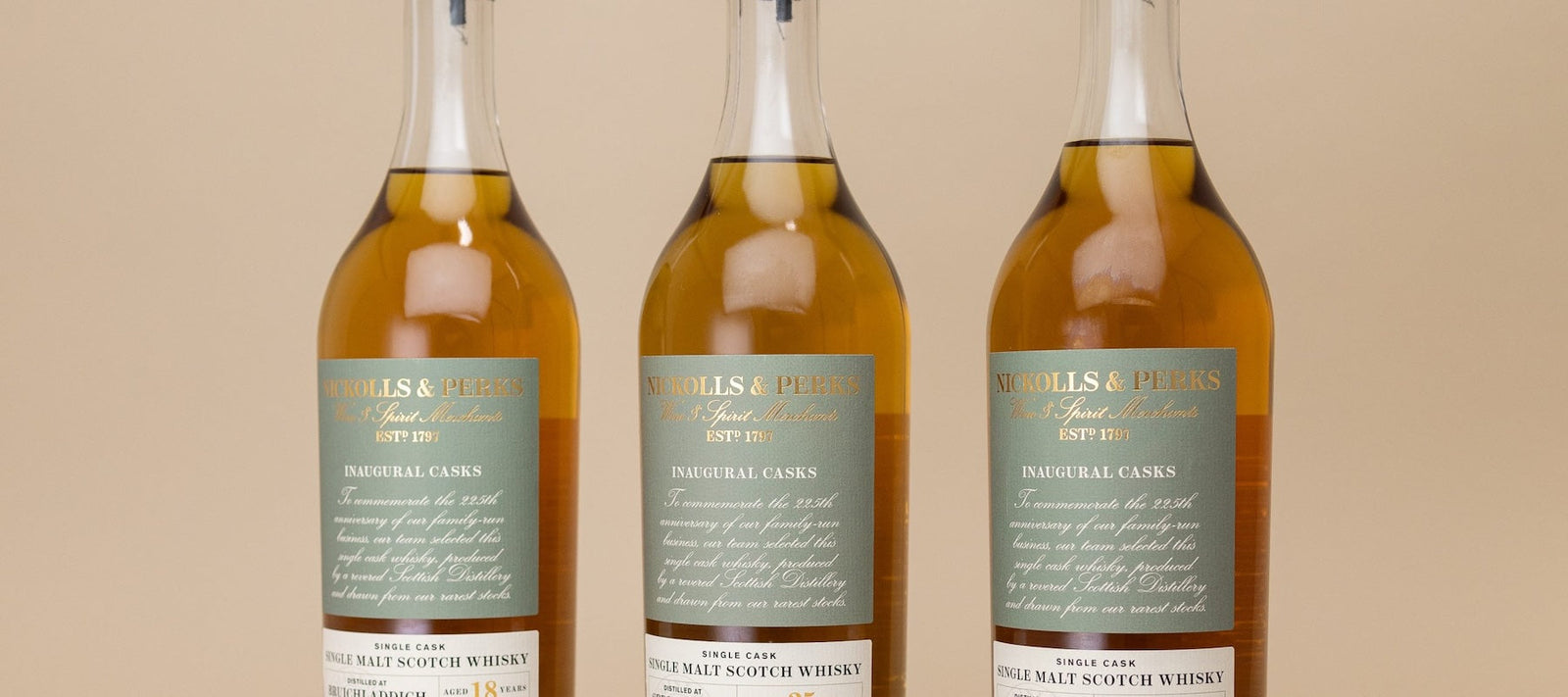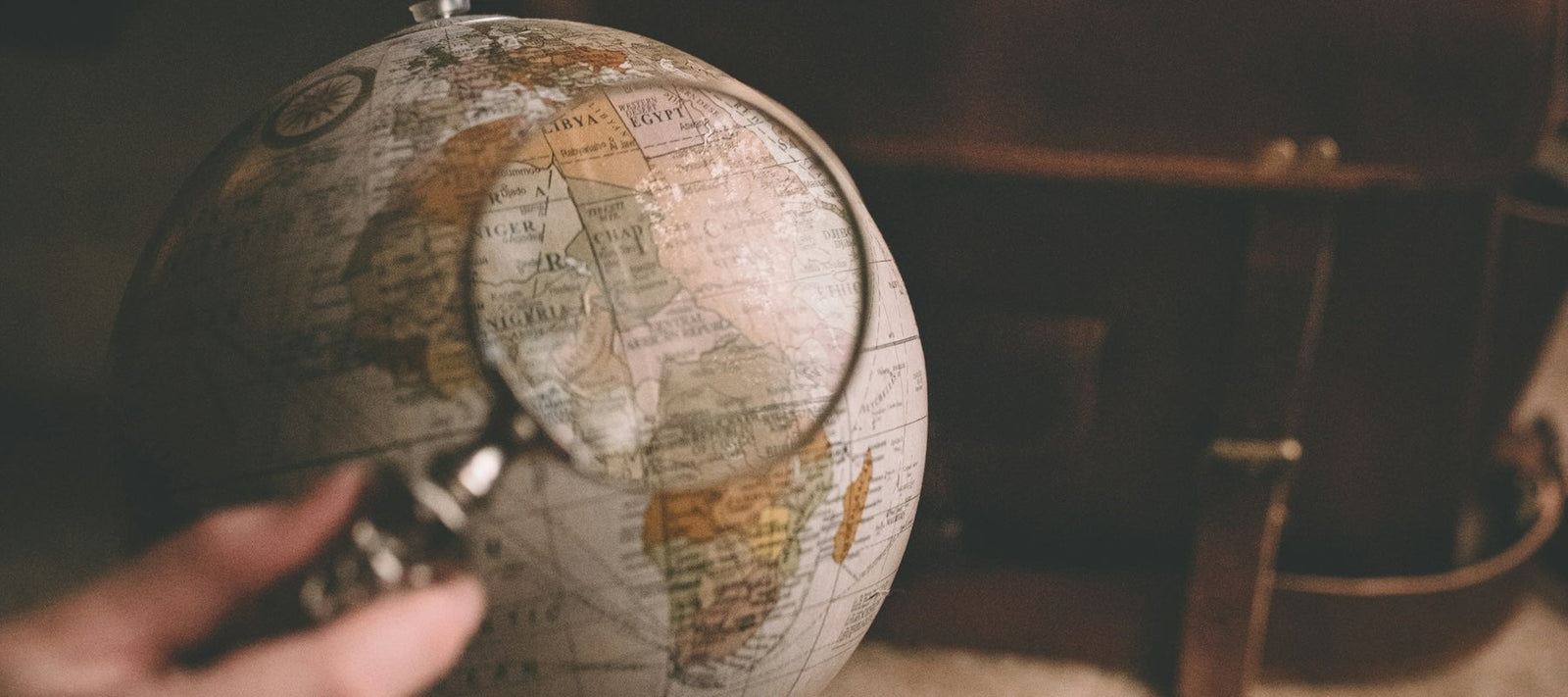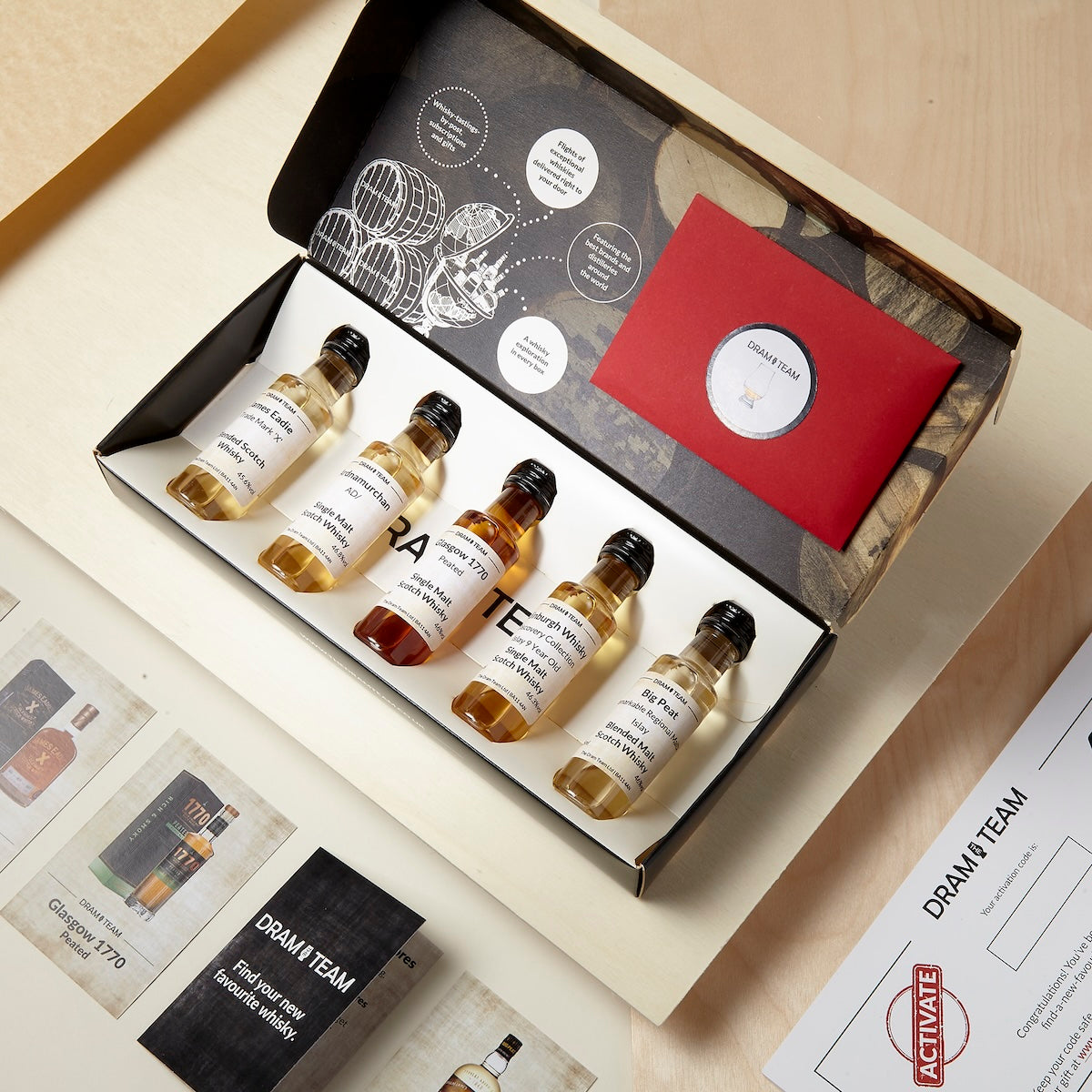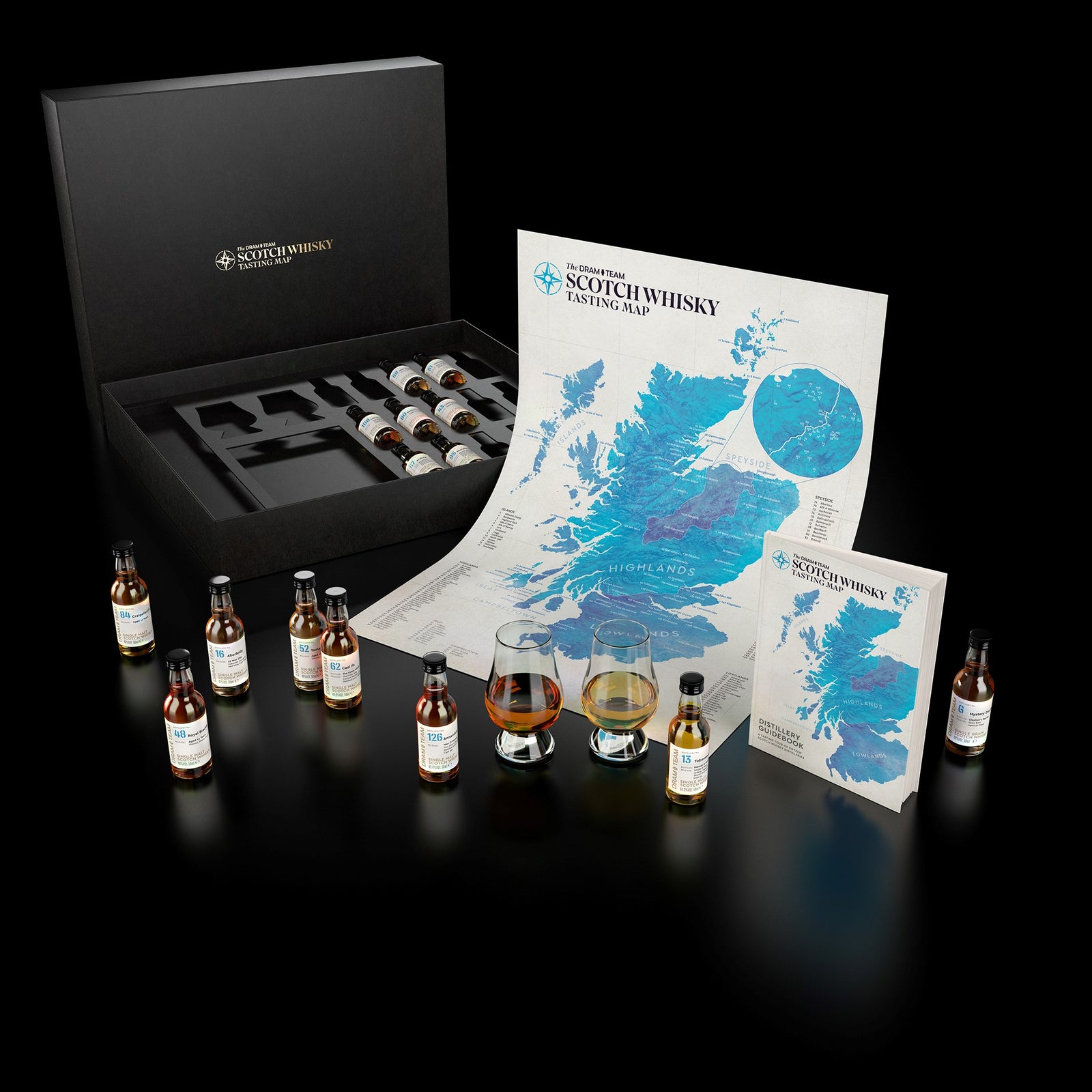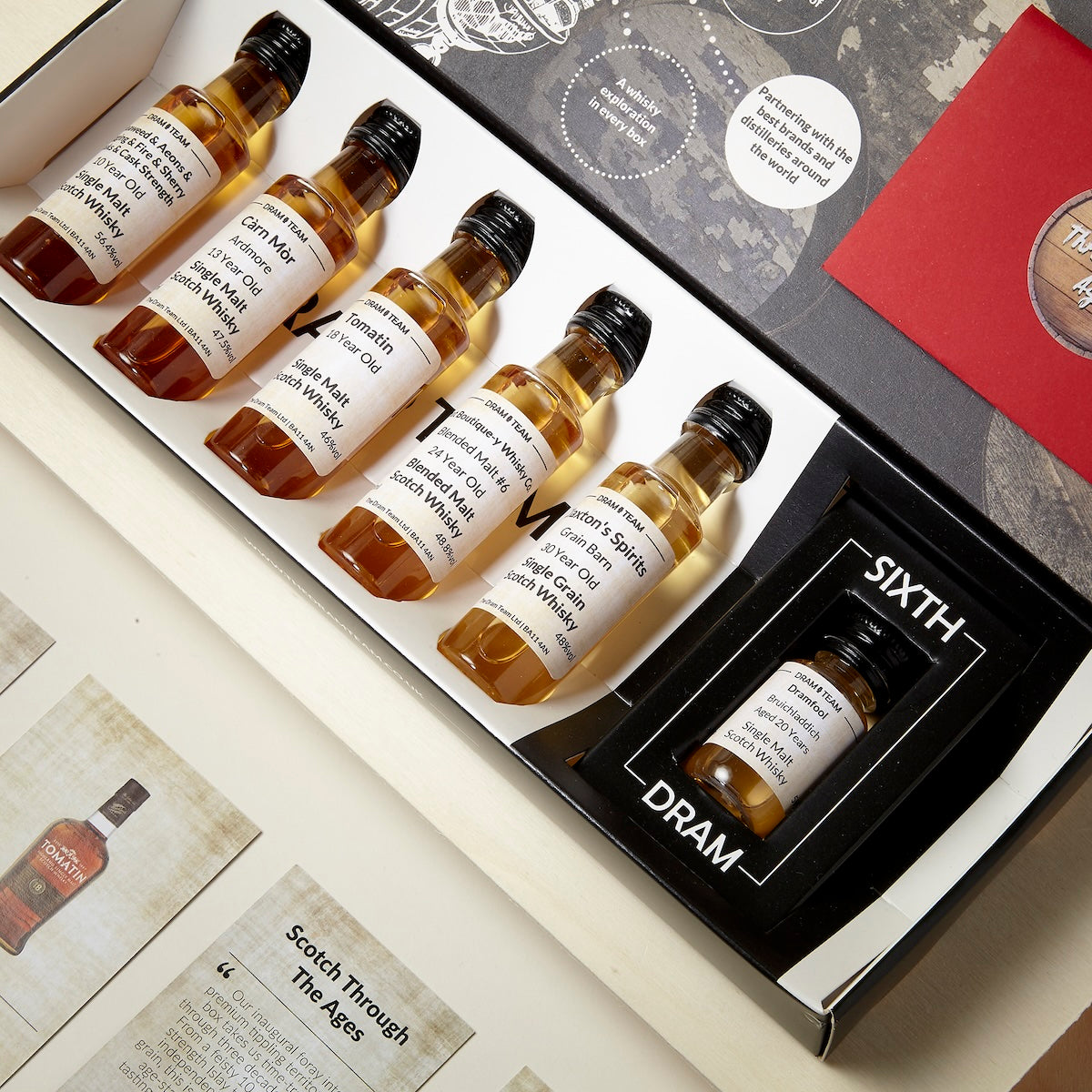Hello Dram Teamers, and welcome back to our series on how whisky is made! This is the second installment in the mini series The Art of the Cask, where we delve into one of the most important aspects of our favourite spirit. Today's post is all about whisky blending - a crucial step in production of whisky.
What is blending?
Blending, simply put, is the process of mixing whiskies from certain casks together. Blending happens at every distillery, and not just to blended whisky. Unless the whisky specifically states that's from a single cask of whisky, it will have been made up of multiple casks (yes, even single malt). As we found out in the previous post, each cask will have a different influence on the whisky inside. We still don't fully understand why one cask of whisky will taste ever so slightly different to another that was filled with the same base spirit, and treated in the same way.
Distilleries and whisky brands rely on repeat customers. Part of that means building up a following based on the unique flavour profile and familiarity of their whisky. That means they need to keep their flagship whisky tasting the same, year after year. A skilled master blender is able to take multiple casks of whisky, blend them together, and create a whisky that tastes nearly identical to the batch they made before. That enables the brand or distillery to keep their well-loved flavour profile consistent.
Why is blending whisky so important?
Being a good whisky blender takes years of training and skill. Most of the best have been at it for decades. Some, like Richard Paterson (Whyte & Mackay) or Rachel Barrie (GlenDronach, Glenglassaugh & BenRiach), take on close to rockstar status in the whisky industry. Blending whisky requires an excellent nose for detail, being able to tease out subtle differences in aromas and flavours of otherwise seemingly identical casks. You must also have a sense of what the overall picture you're trying to achieve, so being able to visualise all those different flavour elements together is key.
 Richard Paterson, aka "The Nose"
Richard Paterson, aka "The Nose"
For example, imagine you've just bought your very own Scotch single malt distillery (one can dream, right?!). You've got a whole warehouse full of different casks, but now you need to start selling the stuff. You decide to come up with a brand new flagship whisky. You need to make sure you can recreate this flavour over and over again with the whisky you've got on hand. One day, you'll be blending a batch, and you'll take 3 casks of 15 year old ex-bourbon barrels, and mix them with 1 barrel of 10 year old sherry whisky. Delicious - you've just made a wonderful 10 year old single malt!
Your whisky sells out faster than you thought, so you come to make your second batch. But, that same recipe with 4 new casks tastes completely different. Now you've got to figure out how to recreate the taste of that first batch. Do you use a different ratio of bourbon to sherry casks? Maybe you need to sub in some younger bourbon casks instead of the 15 year old? Did those barrels sit in a different corner of a warehouse - or did you switch cooperages at one point in the past and the whisky from different years just tastes different? All these variables mean you'll never be able to stick with the exact same recipe each time, so you'd better have a good master blender to recreate your house style over and over again.
How do you blend whisky?
 A blending kit from Chivas Regal, available at Amazon (and other retailers)
A blending kit from Chivas Regal, available at Amazon (and other retailers)
Highlighting how much skill it takes to blend whisky is something a few brands have been doing in recent years. Blended Scotch brands like Chivas Regal and Compass Box have run special tastings giving normal folk like you and me the chance to blend their own little bottles of whisky. These are often a lot of fun, and more often than not you leave realising just how difficult it really is!
If you want to try it at home, here are some tips to make a really great blend, just like the pros would.
Blending Scotch
Start with a base of a really creamy, rich single grain whisky. Any of these grain whiskies would be great candidates. This will provide the backbone and texture of your blend.
Next, think about what flavour profile you want to go with. If you fancy something lighter and sweeter, try some easy going Highlands or Lowlands single malts. Next, perhaps amp up the fruity flavours with a rich sherry-cask Speysider. If you want to add a smoky flavour, add a dash of heavily peated Islay whisky. Be careful though, once you add in peat, you can't take it out - add it a tiny bit at a time, until it gets to the perfect smoke level for you.
When blending whisky, the bulk of your blend will be the more approachable flavours. Then, like adding salt and pepper to a dish, you can add little amounts of a really full flavoured whisky. Like a whisky that's really oaky from too long in the cask, or one that's incredibly perfumed and floral.
Blending American Whisky
Bourbon is usually blended as well, unless it states "single barrel" on the label. Even though they're made up of corn, barley and rye, these grains are all distilled together, rather than being blended after ageing. But that doesn't mean you can't experiment with creating your own "mashbill"!
You can buy 100% ryes, 100% corn whisky, and 100% barley American whisky. Reservoir Distillery in Virginia even released a whole range of 100% grain whiskies, so you could buy a bottle of each and create your own rye or corn-based blend! If you fancy it a bit spicier and drier, up the ratio of rye. More sweeter, fruitier? Add in more corn or barley.

A 100% Rye from Reservoir Distillery
The art of blending casks
Try your hand at blending, and see how you find it. You never know, you might surprise yourself! Grab a few single cask whiskies and try out some different flavour profiles.
Or, leave it to the experts and join our whisky tasting club to try more great whisky more often. You can also give as a gift to the whisky lover in your life.
We also write regular emails to our members, which is the best way to stay informed on upcoming subscription boxes, plus loads of other must-read whisky info. You can get on the list bysigning up here.

